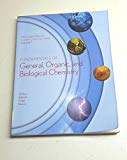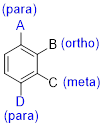
(a)
Interpretation:
The systematic name should be given for the compound.
Concept introduction:
Any organic molecule can be named by using certain rules given by IUPAC (International Union for Pure and applied chemistry).IUPAC name consists of three parts, namely Prefix, suffix and root word.
Prefix- Represents the substituent present in the molecule and its position in the root name.
Suffix- Denotes the presence of functional group if any in the molecule. It can be an
Root word - Represents the longest continuous carbon skeleton of the organic molecule.
(b)
Interpretation:
The systematic name should be given for the compound.
Concept introduction:
Naming
- (1) Substituted benzenes are named using ‘-benzene’ as the parent.
- (2) When benzene has more than one substituent, the position of those substituents is indicated by numbers or by ortho(o-), meta(m-) or para(p-).

(c)
Interpretation:
The systematic name should be given for the compound.
Concept introduction:
Any organic molecule can be named by using certain rules given by IUPAC (International Union for Pure and applied chemistry).IUPAC name consists of three parts, namely Prefix, suffix and root word.
Prefix- Represents the substituent present in the molecule and its position in the root name.
Suffix- Denotes the presence of functional group if any in the molecule. It can be an alkene, alkyne, alcohol, carboxylic acid, alcohol etc. To add suffix to name a compound, the suffix “-ane” in the parent alkane is replaced by the respective suffix, which corresponds to the functional group present in the given compound. For carboxylic acid, suffix “-oic” will be added, for alcohol, suffix “-ol” will be added and so on
Root word - Represents the longest continuous carbon skeleton of the organic molecule.
The aliphatic or aromatic carbon bonded with same oxygen atom is called ether.
Example is given below

Want to see the full answer?
Check out a sample textbook solution
Chapter 14 Solutions
Fundamentals of General, Organic and Biological Chemistry Volume 1, 5th custom edition for Spokane Community College
- Draw Lewis structures for two compounds of formula C2H7N.arrow_forwardGiven the balanced equation with an unknown compound represented by X, which compound is represented by X?arrow_forwardWith the given structures, arrange the following compounds in order of decreasing reactivity towards hydrolysisarrow_forward
